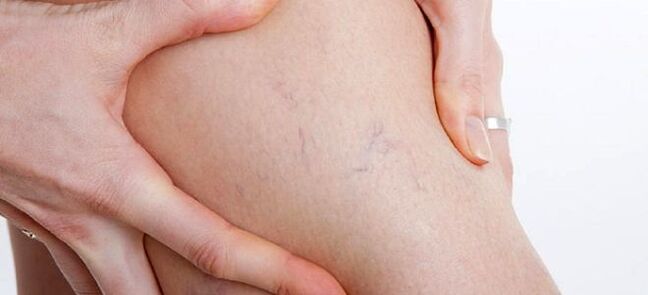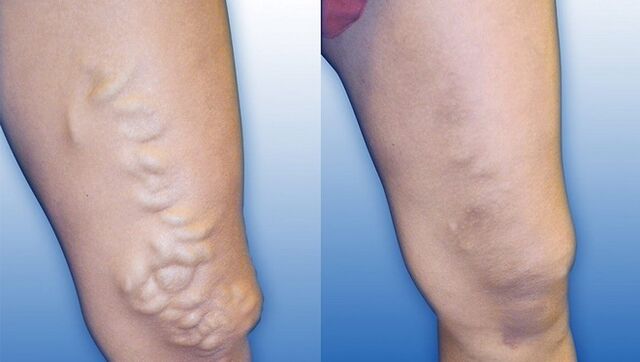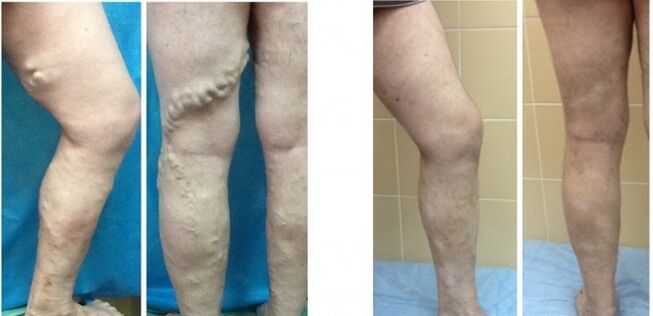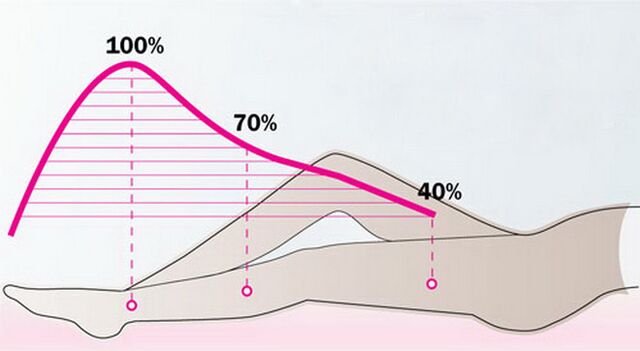
Varicose veins on the legs are a chronic disease in which blood circulation is disturbed, which contributes to an increase in intravenous pressure. The structure of the vessels includes various valves that prevent stagnation by allowing blood to flow exclusively upward. If the valves do not work properly, blood flow begins to circulate unhindered, causing varicose veins to appear in the legs. In that case, the treatment of varicose veins must be carried out immediately, because this disease can cause significant health problems. How to beat varicose veins will now be discussed in an article that can answer the question - is it possible to cure varicose veins forever?
The main methods of treatment
We figured out what varicose veins are, but here's how to treat it? The problem is that many people start treating varicose veins when the disease is already in an advanced stage, ie. to remove this, surgical intervention will be required, as not all conservative methods are recommended anymore. Therefore, it is extremely important to visit a doctor at the beginning of the first symptoms and signs.
Varicose veins on the legs can be removed by external treatments, ie. various creams and ointments. Let's repeat that such treatment can give results only if it is started in the initial stages of varicose veins. The ointment is applied directly to the lesion site, i. vascular network or "spider web" of veins, which is visible on the limb. Such funds can be conditionally divided into groups:
- Preparations based on polysulfuric acid ester of mucopolysaccharides. These agents include ointments and gels that remove stagnant blood in the veins and also have a resorption effect.
- Fats containing herbal ingredients of natural origin. Such agents relieve weakness in the legs during gestation, relieve pain, and have a strengthening effect on blood vessels.
- Nonsteroidal anti-inflammatory drugs. Basically, such gels and ointments are used to treat thrombophlebitis and thrombosis.
- Preparations containing hormones with anti-inflammatory and antihistaminic action.

In addition to using the above external remedies, there are other ways to treat varicose veins. In particular, your doctor may prescribe medications that can be taken orally or by injection.
Effective remedies for varicose veins
Comprehensive treatment of varicose veins must necessarily include taking medications - tablets, injections, etc. In most cases, the following types of medication are prescribed:
- Preparations from the category of phlebotonics. Such agents have a positive effect on blood circulation and also increase the tone of blood vessels. Unfortunately, varicose veins will not disappear after their use, but with the help of these means you can eliminate the symptoms of the disease - swelling and tingling. The drug should be taken two tablets a day, and the treatment period itself is selected in a particular case.
- Drugs that have a thinning effect. Such products dilute the blood, which naturally improves its circulation through the veins. These medications treat varicose veins, but can only be used based on a doctor’s recommendation.
- Preparations with a pronounced anti-inflammatory effect. They allow you to alleviate swelling of the legs, remove pain, ie. well eliminate the symptoms of the disease.
Laser treatment of diseases
Varicose veins can also be treated with modern means such as laser therapy. As a result of the action of the laser on the body, hemoglobin begins to generate heat energy, which closes the vessel affected by the disease from within. Thus, blood circulation is no longer conducted through the affected vessel, but moves through healthy vessels, where there is more room for it. This is a very effective treatment for varicose veins because the effect is spotty, i. precisely to the affected vessel, not to healthy tissue.

Treatment of varicose veins with water
You can treat varicose veins with plain water. Such hydrotherapy has been used for a long time, and the principle itself is as follows: a person is immersed in a water tank, where it will be affected by water of different temperatures. Thus, depending on the water temperature, the vessels can expand or contract, which positively affects their elasticity.
This method is effective if the varicose veins are at an early stage. It can be reported by completely immersing a person in a tub of water, or partially, ie. water acts exclusively on the feet.
RFO in the treatment of varicose veins
Now a popular procedure has become the procedure in which radio frequencies are used to capture areas affected by varicose veins. This method is called RFO - radiofrequency vein obliteration. This method can cure varicose veins at different stages of the disease, which makes this radiofrequency method a good alternative to surgery. The effectiveness of this method is evidenced by numerous reviews on the Internet of those people who have already used this procedure.
RFO has a number of advantages over other methods of treating varicose veins:
- The procedure is short. On average, RFO does not last more than half an hour.
- This method is considered the most modern, because after it there are no scars, scars and other manifestations of surgical intervention on the body. Of course, this significantly speeds up the recovery process from the delayed procedure.
- After RFO, a person can return to their daily life. This means that there is no rehabilitation period after the procedure, ie. the person avoids going to the hospital, no special regime is prescribed, etc.
- RFO shows high efficiency in the fight against varicose veins.

If you are interested in the question of how to get rid of varicose veins, then radiofrequency radiation treatment can be a great solution. Yes, this method is quite expensive, but it avoids surgical intervention, which is often used in the later stages of the disease. However, the operation itself presupposes a period of rehabilitation, ie. the person is disabled for a certain period of time. Therefore, treatment with laser and radio frequencies is more desirable, because with similar efficiency, these methods still do not provide a rehabilitation period. In fact, the patient can go home immediately after the procedure and thus return to his normal life.
However, it should be said about those contraindications in which the implementation of this procedure is impossible:
- Pregnancy, as well as breastfeeding. These periods are considered the most endangered for a woman, during which not only all surgeries should be ruled out, but also the use of many medications. This is explained by the fact that the reaction of the female body to the procedure, as well as to painkillers, can be unpredictable. You ask yourself - how to get rid of varicose veins in this case? The only way out is the use of special medications, as well as massage procedures.
- If atherosclerotic changes are noticed on the walls of the veins. The prohibition here is explained by the fact that the potential harm from the proceedings may outweigh the probable benefits.
- Vein thrombosis in advanced stage. In this case, the procedure is possible only after the cure of this disease.
- If there are purulent formations on the skin on which the affected veins are located. If you perform the procedure, there is a high risk of the infection entering the blood vessels, as well as its further development throughout the body.
Wearing a special jersey
By knowing how to deal with varicose veins, you can get rid of this disease quite successfully without resorting to surgery. In particular, you can use special knitted tights and socks that help remove swelling and pain. Compression underwear compresses the limbs and, accordingly, the varicose veins themselves are compressed. In addition, the prevention of varicose veins includes wearing similar underwear that can be used by men and women.

Surgical intervention
If the varicose veins are advanced enough, often, except for surgery, nothing remains. It's called a "phlebectomy, " which results in the removal of varicose veins. Surgical intervention is possible only if there are no purulent formations and rashes at the site of the lesion. The procedure lasts about two hours, and after that small scars remain - about 5 millimeters.
Indications for surgery include:
- Varicose veins, which are pathological in nature.
- Extensive varicose veins.
- Trophic changes in the skin.
- Circulatory and blood flow disorders.
Treatment of varicose veins with folk remedies
If you want to know how to remove varicose veins with the help of traditional medicine, there are several very effective recipes for your attention. The use of folk remedies is recommended only in the form of complex therapy, ie. along with other methods of treatment.
One of those drugs that has been shown to be effective in fighting varicose veins is apple cider vinegar. It contains about twenty different trace elements that positively affect the human body. In addition, it contains vitamins A, B and C. Here are the main ways to use it:
- After bathing, you can rub apple cider vinegar into the affected area of varicose veins. You do not have to rinse it until the next water procedure.
- You can use vinegar as a compress. We moisten the gauze with a small amount of vinegar, and then apply it on the leg. We wrap the gauze with cellophane and wrap it with a towel. Then you have to lie on your back, placing your legs so that they are about 60 cm above body level. You must lie in this position for one hour.
- You need to take two liters of warm water, as well as 150 grams of vinegar. Pour all this into the basin, and then dip your feet into it. Pour this solution over the affected areas for five minutes, then allow them to dry completely.
Varicose veins can be treated with clay compresses. You can buy it at the pharmacy, while any clay is suitable - white, green or blue. The clay is diluted with cold water, after which it is spread on the affected areas of the feet, but so that the thickness is at least 10 mm. We put cellophane on top, after which we wait for about 1. 5 hours - this is how long the compression procedure lasts. To rinse the clay you only need to go to the shower.
In order for the fight against this disease to be effective, it is necessary to go through at least 12 procedures. At the same time, no more than two dressings can be done per week, so the course of treatment can be considered quite long.
Some people are quite skeptical of traditional medicine. The reasons for this skepticism are understandable, but practice shows that such doubts are not always well-founded. Thus, varicose veins in the initial phase are well amenable to this type of treatment, so these recipes can not be ignored, because in complex therapy, any method whose effectiveness is confirmed by research and practice is important.
Conclusion
Varicose veins are not only perceived as a disease that spoils the appearance of the legs of women and men, but can also be the result of very serious health problems. In particular, varicose veins in a severe stage, which, moreover, have not yet been treated, can lead to the formation of trophic ulcers, and can already lead to gangrene. Probably no one has to explain that gangrene often ends in amputation of limbs, so it is important to know how to treat this disease and what to do when ordinary gels and ointments no longer help.























